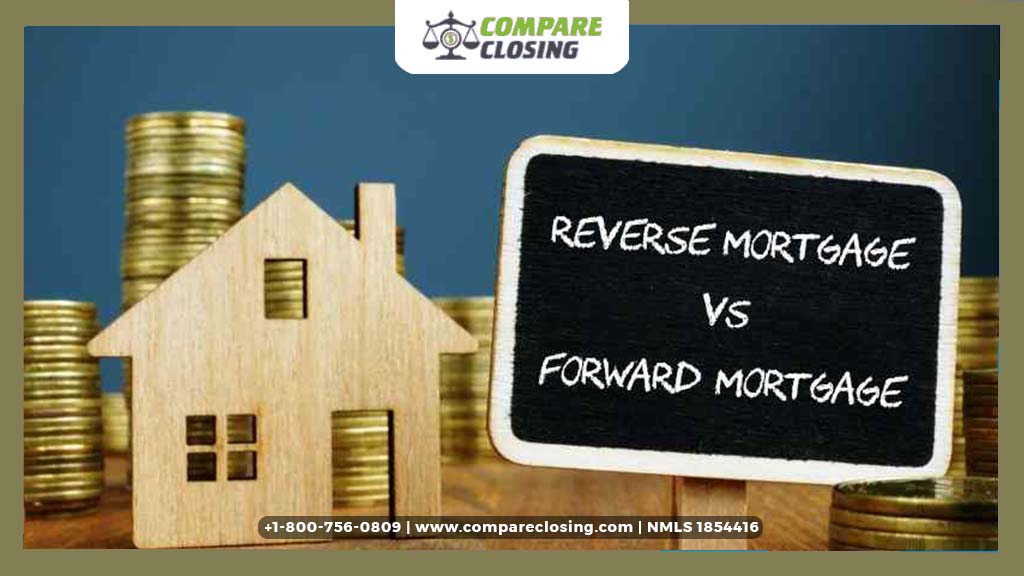Table of Contents
- What Are Netting Escrows & How Does It Work?: The Best Guide - January 2, 2024
- The Secret About Prescriptive Easement: Top Guide 1 Must Know - December 4, 2023
- About Home Equity Loans In Texas And How Can One Obtain It - November 27, 2023
An Overview of Reverse Mortgage vs Forward Mortgage
A forward mortgage is a term that means traditional mortgages and the term is rarely used, except in comparison with a reverse mortgage hence you would have never heard of it.
Depending on your financial situation you go with a forward or reverse mortgage.
If you are not yet 62, then the closest equivalent to a reverse mortgage is a home equity line of credit (HELOC).
HELOC is a set amount of money that can be drawn any time, for any reason provided your home has the equity, In a HELOC your home acts as collateral.
Your home is used as collateral by both forward and reverse mortgages as they are big loans, and huge financial commitments.
A single home can be used as collateral twice in their lifetime by a couple, by getting a forward mortgage while purchasing and a reverse mortgage later in life.
Reverse Mortgage
The federal government regulates reverse mortgages to prevent predatory lenders from taking advantage of senior citizens.
At the time of settlement, the homeowners can get the entire loan amount as a lump sum, with no restrictions on its use.
The only expectation being they will pay off their outstanding debts and use any remaining funds to increase other sources of income.
Homeowners can also get the money as a monthly annuity or line of credit.
In the case of a reverse mortgage, the accumulated debt and interest are due when the mortgage holder moves, sells the home, or dies.
The heirs have to pay the loan within the grace period of six months.
The bank recovers the loss from the insurance fund, which is one of the costs of the reverse mortgage.
In 2017 insurance fund was supported by the Department of Housing and Urban Development (HUD), which administers the dominant reverse-mortgage program.
Forward Mortgage
Borrowers instead of opting for the typical 30-year mortgage, may get a better interest rate, and save a considerable amount in interest over time if they go for a 10- or 15-year mortgage.
But it requires a good amount of confidence that your income and expenses will stay steady or improve in the coming years.
Except for the housing bubble in 2008 usually, the mortgage system assumes that real estate increases in value over time.
According to a survey by ATTOM Data Solutions, as of May 2020 3.6 million American homes, or 1 in every 15 homes with mortgages—were still severely underwater.
This means the homeowners need to continue paying inflated mortgages or when they sell would pay their banks 25% or more above their homes’ assessed value.
During the housing boom, many homeowners acquired a line of credit, using their homes as collateral, in addition to their mortgages.
The homeowners and their bankers took it for sure that the big increases in home values would just keep going but the homeowners got stuck holding the double debt, for the mortgage and the line of credit When the bust came.
For the first quarter in May 2020, a U.S Home Equity and Underwater Report was released by ATTOM Data Solutions.
It disclosed that 6.6% of all mortgaged properties in the U.S. were underwater properties, which is higher than 6.4% in the fourth quarter of 2019.
Examples of Reverse Mortgage vs Forward Mortgage
If a couple, takes a mortgage and buys a home with a small down payment and promises to pay the money back in small monthly installments of principal plus interest over a period of years.
Traditionally the standard is thirty years. Over the number of years, they have paid off the mortgage in full.
The couple who, are living in the same house has turned 62 years of age.
Now they are unable to make the ends meet even with their combined Social Security benefits and retirement savings, so they opt for a reverse mortgage.
They’ll pay nothing upfront and get a monthly check to supplement their income with the option of a reverse mortgage.
They don’t need to pay the mortgage or the interest and costs that accrue over the years.
But, in the future, their heirs must do so, either by selling the family home or with a lump sum.
Conclusion
There are two types of mortgages – the reverse and forward mortgages and both are large loans that use your home as collateral.
Forward mortgages, are commonly called mortgages, are loans that are used to purchase a home.
Reverse mortgages, require you to be 62 years old or older, and they allow you to borrow a lump sum or annuity-like payment when you have large amounts of equity in their home.
There are no monthly payments with reverse mortgages but the balance along with interest is due when the borrower dies or sells the home, or moves away.
Amanda Byford
Amanda Byford has bought and sold many houses in the past fifteen years and is actively managing an income property portfolio consisting of multi-family properties. During the buying and selling of these properties, she has gone through several different mortgage loan transactions. This experience and knowledge have helped her develop an avenue to guide consumers to their best available option by comparing lenders through the Compare Closing business.






